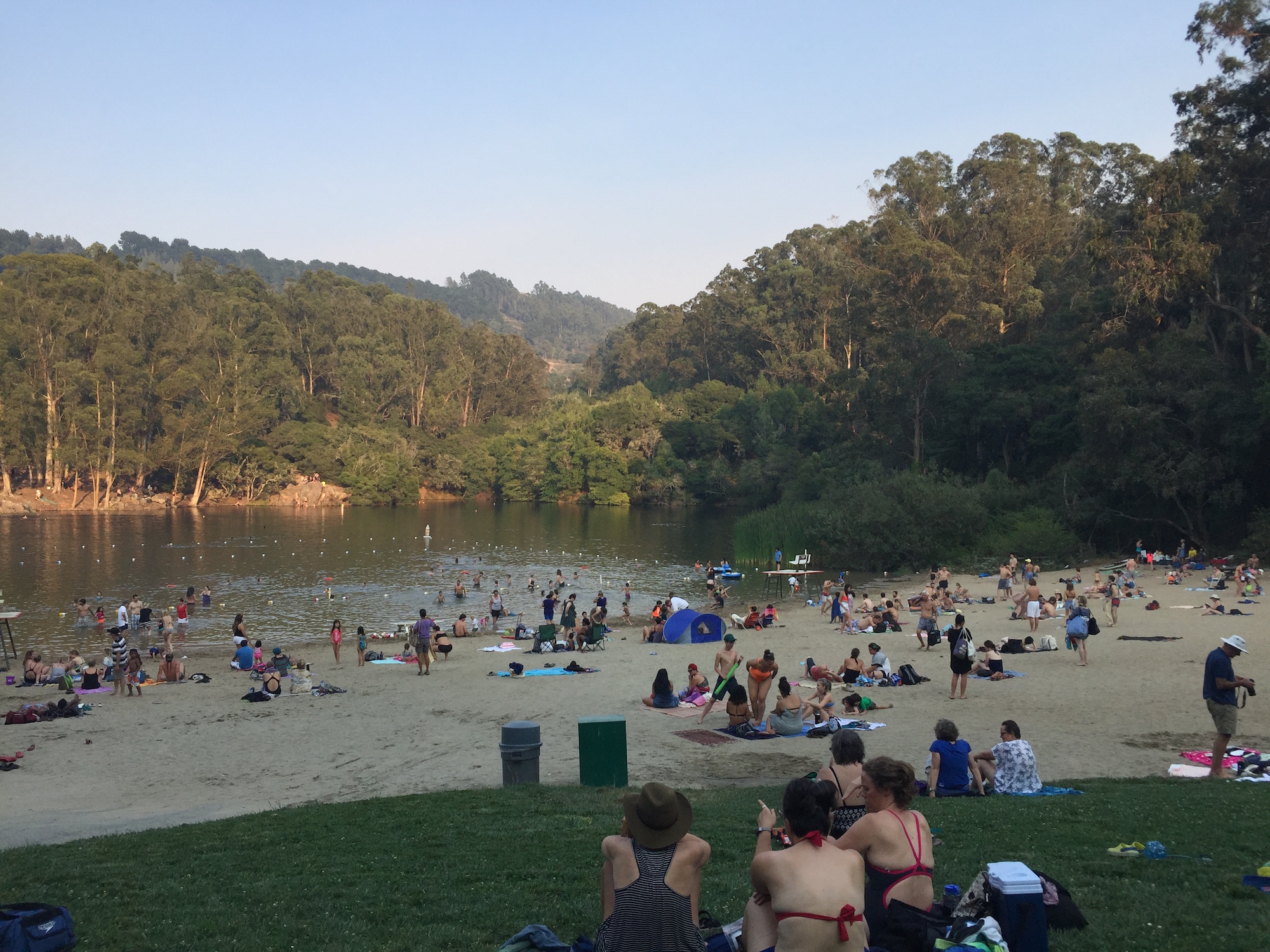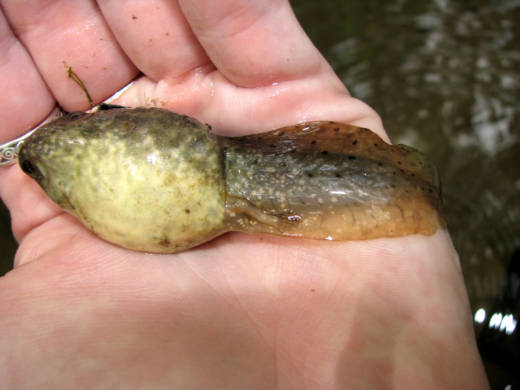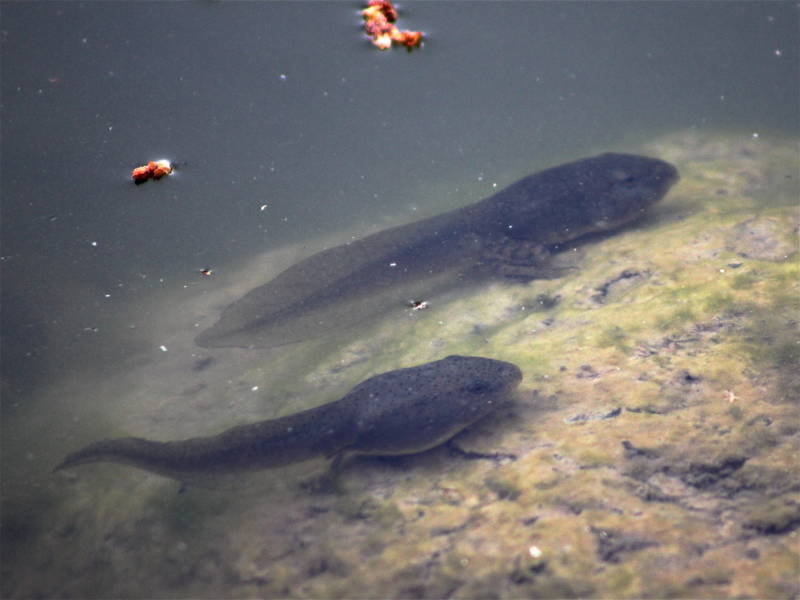Swimmers at Lake Anza in the Berkeley Hills found a slimy surprise this summer: huge tadpoles bigger than they’d ever seen there before.
They came in unnerving numbers — each five or six inches long. And they were rude.
“When you’re walking into the water, they wouldn’t even get out of the way,” recalls lifeguard Cecilia Martin, who sometimes struggled with her campers to avoid the many tadpoles underfoot.
“The kids would scream every time they would step on them—I actually stepped on them too,” recalls Martin with a chill. “They would squirm out of in between your toes, which is the most gross sensation.”
The tadpoles’ appearance was mysterious, says Martin, who has worked as a lifeguard in the East Bay for four summers (her mom happens to be a news editor at KQED). “I had never seen that before, and my friends who had worked here before for five or six years, they’ve never seen it, either.”

To find out what they were, we called Steve Bobzien, a wildlife ecologist for the East Bay Regional Park District. He checked out the lake, and was not happy with what he saw: “Thousands — literally tens of thousands of bullfrog tadpoles in Lake Anza.”



